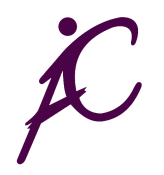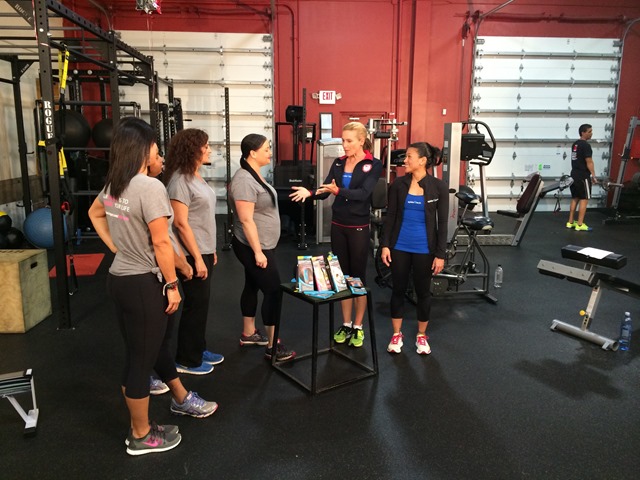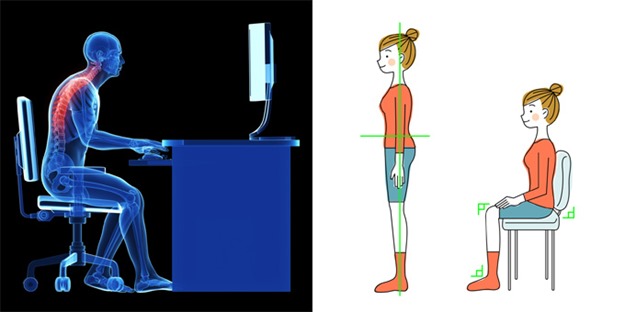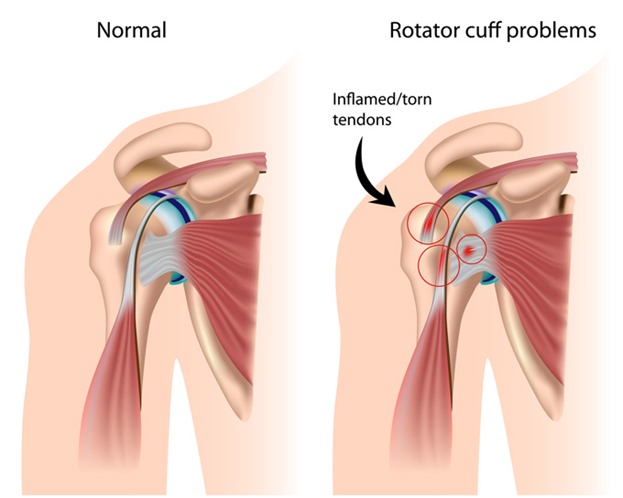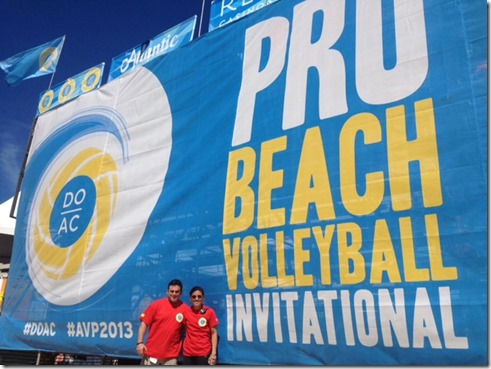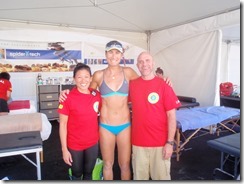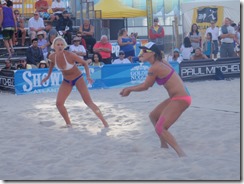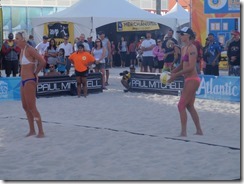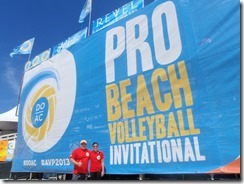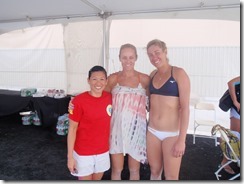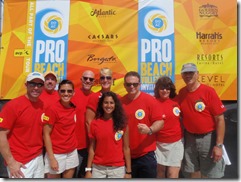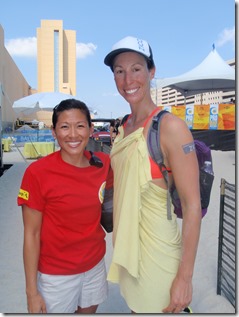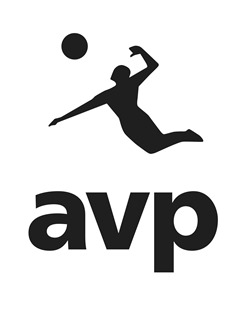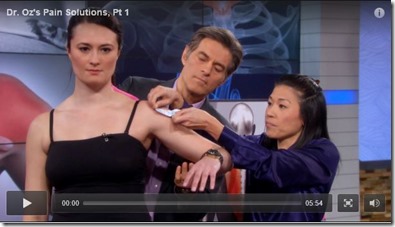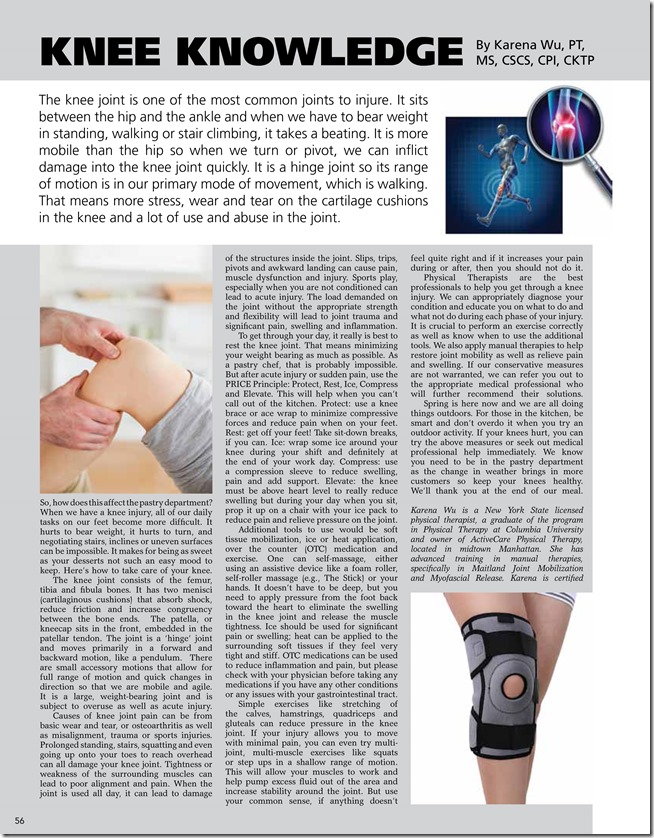About ActiveCare Physical Therapy®
The Best Physical Therapists in NYC
-
Our therapists are licensed in New York State and active members in the American Physical Therapy Association. We have advanced training in joint mobilization and myofascial release techniques.
-
We are dedicated practitioners with a passion for the profession and a comprehensive, holistic approach to treatment and healing. We treat each patient as an individual and treat the whole person, with a plan of care designed to meet the patient’s set goals for health, functionality and a return to work, tasks and activities. We network with a team of physicians, chiropractors, acupuncturists and massage therapists in order to provide guidance to other modalities that may be effective in the patients’ care. We also offer superior Telehealth services for physical therapy.
-
Physical Therapist and owner Dr. Karena Wu PT, DPT, OCS is a graduate of the Program in Physical Therapy at Columbia University and is affiliated with several healthcare organizations in New York City. She is certified as a Strength and Conditioning Specialist, Kinesio Taping Practitioner and Pilates Instructor, and uses SpiderTech Taping. She is also a Certified Orthopedic Manual Therapist, Strength and Conditioning Specialist, Graston Technique Specialist and Pilates Instructor. She holds LSVT BIG, FMS and SFMA Level 1 certifications as well. Dr. Wu also specializes in vertigo and temporomandibular joint disorders.
-
ActiveCare is primarily an out-of-network facility. We accept all insurance with out-of-network benefits and file for most major insurance plans. We work with all prospective patients to create workable payment plans regardless of insurance coverage.
-
ActiveCare accepts Medicare, No-Fault and Workers’ Compensation patients depending on schedule availability.
-
ActiveCare’s administrators provide seamless and efficient concierge-style client service to all of our patients. And the whole ActiveCare team makes sure your time with us is a beneficial, productive and enjoyable experience.
Quick Links
Manual Therapy Bursitis Plantar Fascitis Meniscus Tears Labral Tears Kinesiology Taping Pilates Rehab
Visit Our Main Website:
www.ActiveCarePhysicalTherapy.com
Blog Posts Are Below:
Author Archives: Karena Wu, PT, MS
ActiveCare PT, NYC’s best Physical Therapists Welcomes our newest PT: Ruchi Thakkar
 Ruchi Thakkar earned her Bachelor of Physical Therapy from Mumbai, India. She is currently pursuing her Transitional Doctorate of Physical Therapy from University of the Incarnate Word,Texas.
Ruchi Thakkar earned her Bachelor of Physical Therapy from Mumbai, India. She is currently pursuing her Transitional Doctorate of Physical Therapy from University of the Incarnate Word,Texas.
Ruchi is committed to providing quality care that is customized for each patient, with an emphasis on manual therapy. Ruchi has taken advanced manual therapy courses in Maitland joint mobilizations from Maitland-Australian Physiotherapy Seminars, which emphasize evidence-based techniques for the assessment and treatment of spinal and peripheral conditions.
Ruchi has treated patients with musculoskeletal and sports injuries, and practices Selective Functional Movement assessment for patients with motor control deficits. She uses Functional Movement screening to determine whether patients are ready to return to their particular sports.
Ruchi is licensed with New York State and is an American Physical Therapy Association member. She has taken workshops in sports taping, Theraband exercise and Pilates.
Ruchi is fluent in English, Hindi, Marathi and Gujarati, and enjoys traditional Indian dance forms. She has trained for nine years and is certified in Bharatnatyam, a classical dance style that emphasizes hand gestures (mudras) to portray traditional stories and myths.
Mission Makeover Season 3, Episode 9
Karena Wu, Celebrity Physiotherapist uses SpiderTech Kinesiology Tape to help the 4 remaining girls on Mission Makeover as they continue to lose weight, eat healthy, feel better and run their first 5K race! Olympic Silver medalist Dotsie Bausch joins the group to give the girls inspiration in achieving their goals.
SpiderTech tape is the original and number one Precut Therapeutic Tape in the world. The girls are using the precut X, Knee and Low Back spiders for their aches and pains during their hard training sessions. They felt the difference immediately and are excited to run the 5K for the very first time!
Catch the show on Lifetime. Airdate April 21, 2014, Monday 7:30am EST, 6:30 CST.
(Click to enlarge)
Physical Therapy for Low Back Pain NYC
 Nearly every person will experience some degree of low back pain (LBP) at some point in their lives, and low back pain is the number one cause of work-related disability.
Nearly every person will experience some degree of low back pain (LBP) at some point in their lives, and low back pain is the number one cause of work-related disability.
“Nearly every person will experience low back pain at some point in their life.”
If you have symptoms of pain that do not fade after one or two days, we can help through physical therapy. Our physical therapists will use a hands-on approach to provide relief without the need for medication with side-effects or high-risk corrective surgery. Physical therapy can often help restore or improve mobility of the spine to reduce low back pain, allowing a return to your normal pain-free life quickly and improvement in everyday quality of life.
Physical therapy works to treat back pain in a number of ways, with a treatment regime designed based on your unique symptoms. One of the most effective ways of treating low back pain and increasing recovery speed is exercise. Exercise will strengthen the back, providing better support to the spine which works to help prevent future pain. The PTs at ActiveCare are certified strength and condition specialists, making them the number one choice in designing an exercise routine for you.
Manual Therapy for Low Back Pain.
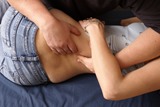 We also have advanced training in manual therapies and are able to use spinal manipulation to provide pain relief if a bulging or herniated disc is at fault. Spinal manipulation works to gently re-position the spine to relieve pressure off a damaged disc, in many cases reducing or removing symptoms of pain completely. Studies have shown that patients have shown significant success using lumbar stabilization exercises (LSE) in combination with other physical therapies.
We also have advanced training in manual therapies and are able to use spinal manipulation to provide pain relief if a bulging or herniated disc is at fault. Spinal manipulation works to gently re-position the spine to relieve pressure off a damaged disc, in many cases reducing or removing symptoms of pain completely. Studies have shown that patients have shown significant success using lumbar stabilization exercises (LSE) in combination with other physical therapies.
Yoga and Pilates for Low Back Pain.
Total body workout programs such as yoga or Pilates can also help to improve posture and body strength, helping to reduce future recurrence of pain. We have certified instructors in both disciplines.
 Contact ActiveCare today to get started with Physical Therapy to reduce low back pain today.
Contact ActiveCare today to get started with Physical Therapy to reduce low back pain today.
Best PT Karena Wu featured in Total Food Service for an article on Back Problems from Carrying Backpacks
Best PT Karena Wu featured in Total Food Service for an article on Shoulder Impingement
ActiveCare Physical Therapists treat AVP ProBeach Volleyball Players
Karena Wu was asked to be Medical Director for the ‘DO ATLANTIC CITY’ AVP/IMG ProBeach Volleyball Tournament in Atlantic City, September 6-8, 2013. The medical tent consisted of Sports Medicine Physicians, Physical Therapists, Chiropractors, Athletic Trainers, and Licensed Massage Therapists. This volleyball invitational consisted of professional athletes and Olympic champions of beach volleyball. Silver medalists Jen Kessy and April Ross won the Women’s Finals and Jake Gibb and Casey Patterson won in the Men’s Finals! Congratulations to all of the players who participated and gave it their all! (click any picture to enlarge)
What is cervical fusion? PT for Cervical Fusion.
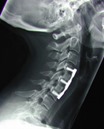 Cervical fusion is a type of neck surgery that fuses damaged portions of the spine together. Sometimes, the vertebrae and disks within the neck can become damaged with overuse and wear-and-tear. This may result in degeneration of the vertebrae themselves, or of the disks that rest between the vertebrae. The result is localized or radiating pain, or numbness and tingling down the arms. Cervical fusion aims to remove severely damaged portions of the spine, and link together the healthy portions of vertebrae that remain. Typically, damaged disks are removed, and the remaining vertebrae are stimulated to produce new bone tissue and fuse together. A metal bar, plate, or screw is often used to add to the stability of the neck, especially during the healing process.
Cervical fusion is a type of neck surgery that fuses damaged portions of the spine together. Sometimes, the vertebrae and disks within the neck can become damaged with overuse and wear-and-tear. This may result in degeneration of the vertebrae themselves, or of the disks that rest between the vertebrae. The result is localized or radiating pain, or numbness and tingling down the arms. Cervical fusion aims to remove severely damaged portions of the spine, and link together the healthy portions of vertebrae that remain. Typically, damaged disks are removed, and the remaining vertebrae are stimulated to produce new bone tissue and fuse together. A metal bar, plate, or screw is often used to add to the stability of the neck, especially during the healing process.
 Neck pain is frequently attributable to a bulging, or herniated, disk. Herniated disks can be effectively managed using non-surgical techniques. Physical therapy and rehabilitation are excellent treatment options for neck or any other type of back pain due to disk herniation (please see our article titled, “What is a herniated disk?”). These treatments focus on the restoration of normal strength and motion to the neck and spine, and address weaknesses or restrictions to allow for greater ease of movement. Only those cases with very severe spine degeneration are candidates for cervical fusion surgery.
Neck pain is frequently attributable to a bulging, or herniated, disk. Herniated disks can be effectively managed using non-surgical techniques. Physical therapy and rehabilitation are excellent treatment options for neck or any other type of back pain due to disk herniation (please see our article titled, “What is a herniated disk?”). These treatments focus on the restoration of normal strength and motion to the neck and spine, and address weaknesses or restrictions to allow for greater ease of movement. Only those cases with very severe spine degeneration are candidates for cervical fusion surgery.
What is Achilles tendonitis?
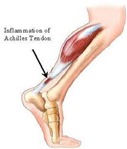 Achilles tendonitis refers to pain and inflammation in the tendon just above the back of the heel. Achilles tendonitis is considered an overuse injury. It is most common in athletes, and those who place repeated stress on the Achilles tendon. This frequently occurs with prolonged running, walking, and jumping maneuvers.
Achilles tendonitis refers to pain and inflammation in the tendon just above the back of the heel. Achilles tendonitis is considered an overuse injury. It is most common in athletes, and those who place repeated stress on the Achilles tendon. This frequently occurs with prolonged running, walking, and jumping maneuvers.
Because this area of the body does not have a good blood supply, Achilles tendonitis can persist for long periods of time. In an attempt to repair the small “micro tears” that have occurred in the Achilles tendon, the body creates new blood vessels and small nerve branches in the injured area. These new blood vessels and nerves are thought to be the source of pain.
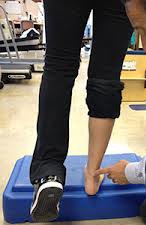 Treatment for Achilles tendonitis is aimed at relieving pain while also strengthening and supporting the Achilles tendon, ankle, and lower leg muscles. Rest, ice, and compression are critical components of care. Many patients with Achilles tendonitis find great improvement and relief from symptoms with a combination of moderate compression, supportive elastic bandages, and heel pads. In addition, manual therapies may help bring relief to the strained Achilles tendon itself, as well as address tensions in the foot, ankle, and calf that may be contributing to the problem. Specific targeted exercises can stabilize and strengthen the Achilles tendon, allowing it to be more resilient with future activity.
Treatment for Achilles tendonitis is aimed at relieving pain while also strengthening and supporting the Achilles tendon, ankle, and lower leg muscles. Rest, ice, and compression are critical components of care. Many patients with Achilles tendonitis find great improvement and relief from symptoms with a combination of moderate compression, supportive elastic bandages, and heel pads. In addition, manual therapies may help bring relief to the strained Achilles tendon itself, as well as address tensions in the foot, ankle, and calf that may be contributing to the problem. Specific targeted exercises can stabilize and strengthen the Achilles tendon, allowing it to be more resilient with future activity.
Karena Wu contributes to NY Parenting
Best PT NYC 2013 welcomes Natalie Cantrell
 Natalie Cantrell is an Oregonian recently graduated from the University of Oklahoma with a degree in Health and Exercise Science. She has a passion for dance of both classical and contemporary techniques. She aspires to continue learning about injury, rehabilitation, and whole-body wellness, intending to put her knowledge to use as a future physical therapist. At ActiveCare she enjoys working with a talented staff and assisting patients on their paths to improved health.
Natalie Cantrell is an Oregonian recently graduated from the University of Oklahoma with a degree in Health and Exercise Science. She has a passion for dance of both classical and contemporary techniques. She aspires to continue learning about injury, rehabilitation, and whole-body wellness, intending to put her knowledge to use as a future physical therapist. At ActiveCare she enjoys working with a talented staff and assisting patients on their paths to improved health.
PT for TMD and Holistic Physical Therapy at ActiveCare PT–Best PT NYC 2013
ActiveCare PT was proud to showcase Karena Wu and her holistic treatment of Temporomandibular Disorder. Melissa from Fox News interviewed Karena on her treatment style. Video was taken of Karena treating her patient, Michelle Won who has had TMD for years. The story will be showcased on the air, but we are still waiting for the date. Stay tuned!
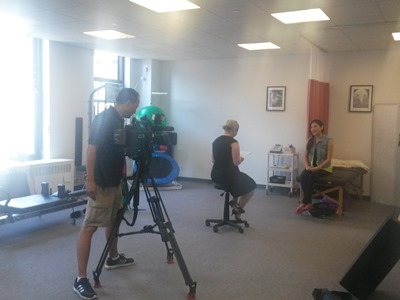
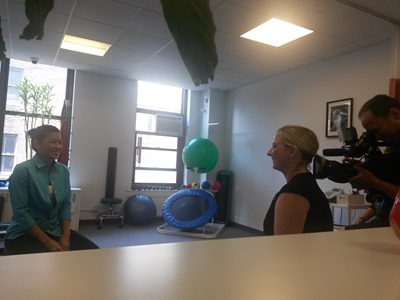
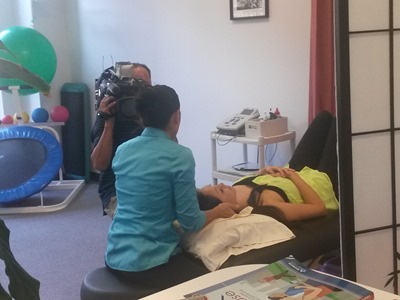
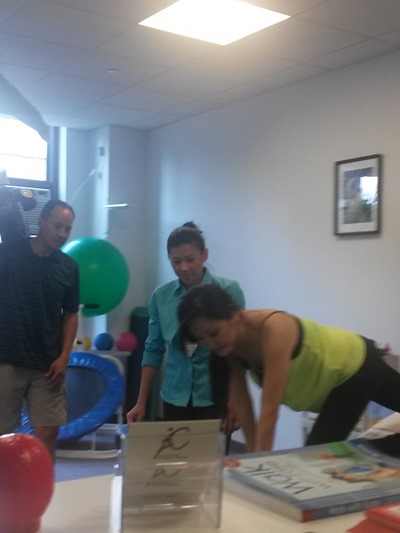
Best PT NYC Karena Wu featured on Dr. Oz’s Sharecare
Karena Wu participates in Dr. Oz’s Sharecare, an online healthcare professional community.
After appearing on Dr. Oz to discuss Elastic Therapeutic Taping, Karena was asked to speak more about it with their team of professionals. She appears in 4 videos discussing the topic of tape and neck and shoulder pain.
Click picture below for video and article:
Best PT NYC 2013 welcomes Kelly Picciurro
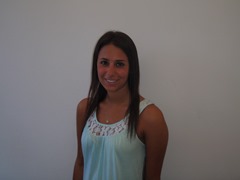 Kelly Picciurro was born in Marlboro, NJ and lived there until she entered college in the fall of 2009. She recently graduated from the University of Maryland with a degree in psychology. She will enter a physical therapy program in the fall of 2014 in order to fulfill her wish to become a physical therapist. Kelly realized she wanted to go into the field of physical therapy after working in a PT clinic in Maryland and two hospitals, one in New York City and one in Washington, DC. Kelly also enjoys working out and staying fit, going to the beach, and traveling around the world with her family. She plans to open her own practice once she graduates from school. She is very excited to be part of the ActiveCare PT team and knows that she will gain great knowledge from this experience, preparing her for school and what will come after she graduates.
Kelly Picciurro was born in Marlboro, NJ and lived there until she entered college in the fall of 2009. She recently graduated from the University of Maryland with a degree in psychology. She will enter a physical therapy program in the fall of 2014 in order to fulfill her wish to become a physical therapist. Kelly realized she wanted to go into the field of physical therapy after working in a PT clinic in Maryland and two hospitals, one in New York City and one in Washington, DC. Kelly also enjoys working out and staying fit, going to the beach, and traveling around the world with her family. She plans to open her own practice once she graduates from school. She is very excited to be part of the ActiveCare PT team and knows that she will gain great knowledge from this experience, preparing her for school and what will come after she graduates.
Best PT NYC, Karena Wu featured on Total Food Service Article: Bone Fracture or Bone Bruise
The Hard Truth About a Torn ACL
Until they suffer a devastating knee injury, many people don’t even know they have an ACL. What is it, and what does it do? One of the four major ligaments of the human knee, the Anterior Cruciate Ligament (ACL) binds the back of your thigh bone, or femur, to the front of your shin bone or tibia, and is the primary stabilizer of your knee.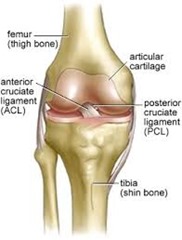
Most often seen in athletes, a torn ACL can be a debilitating, often career-ending injury, causing destabilization of the knee which can only be repaired through surgical reconstruction. Injuries to the ACL range from small tears to a completely torn ligament, usually occurring when the knee is bent backward or too much to one side.
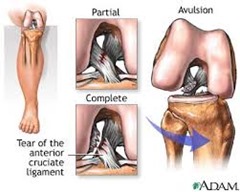 Women who play sports are more likely than men to suffer ACL injuries due to musculoskeletal differences and the tendency of female athletes to land and turn during movement with their knees straight, while males tend to do so with their knees bent. Also, certain female hormones may cause the ACL to periodically become relaxed and loose.
Women who play sports are more likely than men to suffer ACL injuries due to musculoskeletal differences and the tendency of female athletes to land and turn during movement with their knees straight, while males tend to do so with their knees bent. Also, certain female hormones may cause the ACL to periodically become relaxed and loose.
Treatment for ACL Injury
The most conservative treatment for a torn ACL is physical therapy to strengthen the hamstring and quadriceps. Since the ACL’s primary function is to stabilize the knee when extended and when surrounding muscles are relaxed, many people can function quite well without an ACL.
Over time, however, the tibia and femur may start to rub against each other, resulting in cartilage damage inside the knee. Lack of an ACL also increases the risk of further knee injuries such as a torn meniscus, so further participation in sports may be out of the question. For this reason, many athletes suffering a torn ACL elect to undergo surgery.
Types of ACL Surgery
If an ACL is severely torn, or in the case of an athlete wanting to participate sports, surgery may be required. Since there is no blood supply to the ACL it is unable to heal on its own. Reconstructive surgery is performed after the swelling and inflammation have gone down, usually several weeks after the injury.
Reconstructive surgery uses either one’s own tissue or that taken from a tissue bank to replace the torn ACL. These are known as autografts and allografts, respectively. The benefit of using donor tissue is primarily reduced pain after surgery from the site of tendon harvesting. Also, some patients may develop chronic patellar tendonitis after having a graft taken from that area. The primary benefit of the autograft method is a reduced risk of infection, which occurs more frequently with donor tissue.
Grafts may be taken from the patella tendon or the hamstring. In the Patella tendon method, the surgeon removes the central third of the patella tendon along with a small piece of bone at each end where the tendon attaches to the kneecap and tibia. Many patients experience post-operative knee pain due to the removal of bone from the kneecap, however this method results in a much stronger bone-to-bone attachment, and the patella tendon is relatively the same length as the ACL.
In the hamstring graft method, the surgeon wraps two tendons from the hamstring muscles together to create a new ACL. While this new ligament takes longer to attach without the benefit of bone-to-bone healing, there is less post-operative pain and a smaller incision.
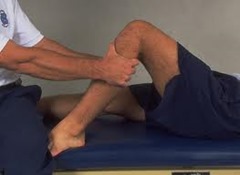 Six to ten months of physical therapy will be required after either type of surgery before an athlete can return to his or her sport. Your physical therapist can give you the best assessment of whether or not your tendon graft is sufficiently healed and stabilized. Attempting to rush this rehabilitation period may lead to further injury and permanent destabilization of the knee.
Six to ten months of physical therapy will be required after either type of surgery before an athlete can return to his or her sport. Your physical therapist can give you the best assessment of whether or not your tendon graft is sufficiently healed and stabilized. Attempting to rush this rehabilitation period may lead to further injury and permanent destabilization of the knee.
It is important to keep in mind that after a suffering a torn ACL, whichever type of surgery you choose – if any, you will still be susceptible to the early onset of chronic degenerative joint disease in that knee.
Practicing Pilates for Prevention of Running Injuries
While many remember him as having an impressive physique, even in later years, Joseph Pilates, stalwart inventor of the popular Pilates Method of exercise, started out in life as a rather unhealthy child. In order to improve his own physical fitness, he spent a good deal of time studying anatomy and developed himself as a body builder, gymnast, wrestler, boxer, diver and skier. Pilates successfully remade himself into a healthy, strong and fit individual, and remained that way until he passed away in 1967 at the ripe old age (for the times) of 83.
Living in England at the outbreak of WWI, Pilates found himself forced into an internment camp where he started to invent what would become as the Pilates mat method in order to keep himself in good shape. Later he began to work with injured camp detainees, rehabilitating them with his various strengthening techniques and exercises. Resistance equipment he created out of beer keg rings and bed springs eventually formed the basis for the modern Pilates equipment known as the magic circle and the reformer.
At the core of the Pilates Method is the balanced, symmetrical development of the entire body, emphasizing core strength, flexibility and balance. By simultaneously strengthening and lengthening the muscles, Pilates exercises stabilize the body’s core, promote balance, symmetry, breathing control and efficiency, all desirable traits for a serious runner.
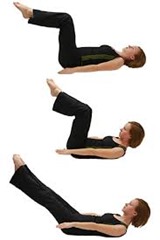 Developing Muscles Neglected by Running
Developing Muscles Neglected by Running
Running movements are primarily in a forward direction, or sagittal, consequently runners tend to have very strong quadriceps, somewhat weaker hamstrings and glutes, and are very weak in the side-to-side movement muscles, particularly the inner and outer thighs, also known as the abductors and adductors. These are the very muscles needed, however, to help us keep our hips and knees in line with our ankles when we run in order to maintain a balanced, even stride.
When inner thigh muscles are weak, runners tend to roll their feet outward, causing ankle, knee and hip strain. Our outer thigh muscles attempt to compensate for this by pulling the leg into inward rotation, causing the band of fibrous tissue that runs from down the outside of our thighs to stabilize our knee and hip joints known as the IT band to slip over the knee or hip, causing serious inflammation, irritation and pain. ITB syndrome is the most common injury experienced by serious runners, and can easily be avoided by strengthening the inner and outer thigh muscles through Pilates exercises.
Similarly, runners who practice Pilates are less likely to develop injuries such as plantar fasciitis and shin splints, which are largely caused by overpronation of the feet, inflexible calf muscles and tight Achilles’ tendons. Emphasizing flexibility, alignment and balance, Pilates training helps a runner to develop and maintain a smooth, even gait with hips, knees and ankles perfectly aligned and no foot pronation in either direction. Having a strong core, evenly developed musculature and acute awareness of gait and balance is one of the major benefits runners receive from Pilates training.
Be Proactive, Not Reactive
Instead of seeing a physical therapist only to recover from an injury, why not be proactive and consult with an ActiveCare physical therapist before getting injured? By prescribing a preventive care program of Pilates-based exercise tailored specifically to your development needs, your ActiveCare physical therapist will help you to strengthen those weak side muscles that could turn out to be your Achilles’ heel, so to speak.
By being proactive and heading off injury with a comprehensive, total body strengthening program, you can save yourself a good deal of pain, frustration, down time and even money further down the road!
Best PT NYC Karena Wu featured in Dessert Professional Magazine–Knee Knowledge
Rock the Plank for Better Core Engagement
Whether you’re going for rock hard abs or just a strong, healthy core that will support your spine and keep you from developing back problems, doing thousands of crunches daily will not get you there!
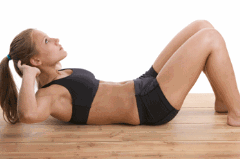 First of all, a crunch only works six to seven muscles and ignores opposing muscle groups, which also need to be strong in order to support your core as you go about your daily life. Over time, over-strengthening your abdominals this way can ruin your posture and actually contribute to back problems rather than prevent them.
First of all, a crunch only works six to seven muscles and ignores opposing muscle groups, which also need to be strong in order to support your core as you go about your daily life. Over time, over-strengthening your abdominals this way can ruin your posture and actually contribute to back problems rather than prevent them.
Notice your posture when you’re sitting at your desk or in your car. Over time you start to slump forward until you end up in that crunch position. Your abdominals are actually contracting and pulling you into a slouch!
So what is the solution? It’s called the plank, a much safer, healthier and more effective exercise for strengthening your entire core. Compared to the maybe six or seven muscles you work during a crunch, the plank engages 20 muscles! The important thing, however, is that muscles on both sides of your body are worked evenly, for a strong, healthy, balanced core that will protect your spine and also give you that tight midsection you’re going for.
What is the Plank?
The plank is a powerful but simple isometric exercise that you can do at home, without any special equipment or fancy bells and whistles. Executed properly, it will build strength and endurance in your entire core – obliques, rectus abdominus, lower back and stabilizing muscles. All you need is a little bit of space and an exercise mat.
1. Start out face down on your mat.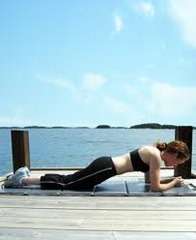
2. Raise your body off of the floor until you’re resting on your elbows, with only your toes, elbows and forearms touching the floor.
3. Make sure your back is perfectly flat and your body is in a straight line from your head to your heels.
4. Contract your abs to ensure your back doesn’t sag.
5. Hold this posture for as long as you can, working up to longer periods as you get stronger.
Concentrate on pulling your belly-button in towards your spine to help you engage your deep abdominals. These are the muscles you need for a strong, healthy back. If you’ve never done this exercise before, you will most likely begin to shake after holding the position for just a few seconds. This indicates weakness in your abdominal region. Over time you will be able to hold the position for much longer periods of time.
Other Versions of the Plank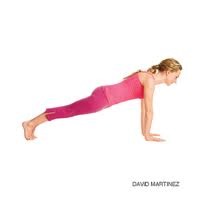
If the plank is too difficult at first, you can start out with a modified version, leaving your knees on the floor until you gain the core strength necessary to graduate to a full plank. Once you have mastered the full plank, try targeting the obliques with a side plank, facing sideways while balancing on one forearm and the side of one foot with the other hand resting on your hip. Then flip over and repeat the exercise on the other side.
For a real challenge, try modifying the plank by raising one arm or one leg and holding that pose for three seconds. Then switch and repeat with the other arm or leg. Or try raising the opposite arm and leg at the same time!
The more you practice the plank exercise, the more improvement you will notice in your core strength and stability. Your physical therapist can show you even more exercises that will strengthen your core for a lean, toned midsection that will not only look fantastic but carry you through life with a minimum of back pain and posture problems!
Putting an End to Low Back Pain
If you’re suffering from lower back pain, you’re in good company. At some point in time, almost everyone on the planet experiences back pain severe enough to interfere with work or daily activities. Back pain is the most common cause of job-related disability in the U.S., as well as a leading cause of missing work. We spend more than $50 billion every year on treatment of low back pain and after headaches, it’s our most common neurological complaint.
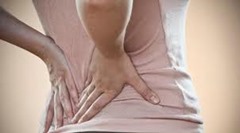 What causes back pain? As we age, we lose bone strength as well as muscle elasticity and tone, and our spinal discs become hardened and provide less cushioning for our vertebrae. It’s easier to sprain or strain the muscles and ligaments in our back through improper lifting, over exertion or even just poor posture.
What causes back pain? As we age, we lose bone strength as well as muscle elasticity and tone, and our spinal discs become hardened and provide less cushioning for our vertebrae. It’s easier to sprain or strain the muscles and ligaments in our back through improper lifting, over exertion or even just poor posture.
Poor or non-existent exercise regimens over time may cause muscle imbalances between our abdominal and back muscles, destabilizing our core and leading to poor posture and misalignment of the spine. Misaligned vertebrae can cause spinal discs to rupture or bulge, putting pressure on one of more than 50 nerve roots in our spinal cord, causing intense pain and even tingling and numbness in our extremities.
Exercise for Cure and Prevention
For most types of lower back pain, exercise is the number one way to speed recovery and help strengthen back and abdominal muscles. Your physical therapist can provide a list of gentle exercises to help keep your muscles moving and thereby hasten the healing process. Pilates-based core-centric rehabilitation exercises also help to improve coordination, improve posture and muscle balance, while yoga is an excellent way to gently stretch back muscles and ease pain.
For disc problems, spinal manipulation performed by a chiropractor using leverage and gentle, hands-on adjustment is effective to realign spinal vertebrae, reducing pressure on nerve roots to ease pain and restore mobility. Many people with chronic back pain regularly see a chiropractor for these adjustments.
Recurring back pain is often preventable by maintaining and building core muscle strength and stability through regular exercise. Your physical therapist can show you exercises that you can do at home to help you to develop a strong, healthy core that will support your spine for better back health, as well as develop and maintain flexibility and correct posture.
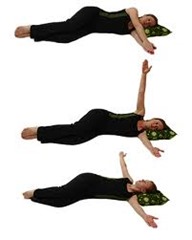 Postural re-education programs are available for those with chronically poor posture. Although these programs primarily focus on people with “forward head posture,” another widespread problem that leads to development of a pronounced hunch in many elderly persons, the training is nonetheless useful for correcting all sorts of posture problems.
Postural re-education programs are available for those with chronically poor posture. Although these programs primarily focus on people with “forward head posture,” another widespread problem that leads to development of a pronounced hunch in many elderly persons, the training is nonetheless useful for correcting all sorts of posture problems.
Many holistic exercise programs, such as Pilates and yoga provide well balanced total body workouts that concentrate on posture, strength, flexibility, balance and alignment, and are superb for helping to maintain a strong, flexible physique. When was the last time you saw a yogi with poor posture?
When in Doubt, Ask for Help
Finally, practicing proper lifting techniques (lift with your legs, not your back!) and getting assistance rather than attempting to lift something that is too heavy or awkward to manage alone is critical to avoiding back strain and spinal misalignment. As was mentioned earlier, back injuries are the number one cause of work-related disability, among men and women of all ages.
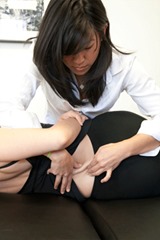 It’s important to keep in mind that as we age our muscles lose elasticity and are more prone to sprain and strain. Respect your body and respect your limitations. Your physical therapist knows better than anyone; it only takes a few minutes to get some help, but it may take months or even years to get over a back injury!
It’s important to keep in mind that as we age our muscles lose elasticity and are more prone to sprain and strain. Respect your body and respect your limitations. Your physical therapist knows better than anyone; it only takes a few minutes to get some help, but it may take months or even years to get over a back injury!
Kinesio Tape Sweeps London’s Olympic Games
At the 2012 Summer Olympic Games in London, the only thing brighter than the athletes’ uniforms was the brilliant multi-colored tape that seemed to adorn various body parts of nearly every athlete that attended. What exactly is that stuff?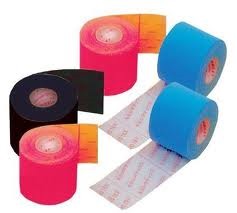
That “stuff” is Kinesio tape, a form of elastic therapeutic tape applied by specially trained physical therapists to support injured muscles, decrease muscle pain and increase range of motion, primarily in athletes who need to keep on performing even when they’re injured.
Invented some 30 years ago by Dr. Kenzo Kase, a Japanese chiropractor, Kinesio tape is a strong, elasticized cotton tape that combines strength and support with flexibility and movement. Frustrated with conventional athletic tapes which he felt were too rigid, Kase decided that his patients needed something with “a texture and elasticity very close to living human tissue.” Kase discovered that the application of his unique tape seemed to replicate some of the beneficial effects of massage therapy in relieving pain and soreness in injured patients.
2008 Olympic Breakthrough
Although Kinesio tape has been sported by various Olympic athletes since 1988, the product gained tremendous popularity after 50,000 rolls were donated to therapists in 58 countries to use on athletes at the Beijing Olympics in 2008. Now athletes ranging from Lance Armstrong to the Green Bay Packers swear by it, and some independent research supports its efficacy. A double-blind, randomized clinical trial in 2008 reported that application of Kinesio tape produced an instant improvement in range of motion in subjects treated for shoulder pain, compared with a placebo tape. Another study of whiplash patients found that Kinesio tape provided improved range of motion and pain relief which lasted several days.
Although various kinds of tape have been used to patch up injuries for many years, quite a few physical therapists find Kinesio tape to be a major improvement over the conventional zinc-based tape, which prevents all movement. Kinesio tape is able to stretch and contract, inhibiting movements that might cause further injury yet allowing ones that don’t. When properly applied, the tape allows runners to continue to train even with an injury.
Dr. Kase believes the source of a lot of joint and muscle pain actually is in the layer of skin between the dermis and the epidermis, which is compressed by conventional tape. “I needed to create something to lift these layers,” he explains. The tape opens the space between the dermis and the epidermis, enabling the flow of blood and lymphatic fluids. The tape, in fact, is said to provide results similar to lymphatic drainage massage to reduce swelling.
What is a CKTP?
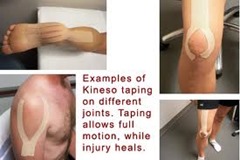 The key to Kinesio tape’s efficacy is proper application, and Dr. Kase’s company has trained more than 100,000 practitioners worldwide on how to use it to best effect. At the 2012 London Summer Olympic Games it was used by physical therapists from 80 different countries, in a rainbow of colors, patterns and designs.
The key to Kinesio tape’s efficacy is proper application, and Dr. Kase’s company has trained more than 100,000 practitioners worldwide on how to use it to best effect. At the 2012 London Summer Olympic Games it was used by physical therapists from 80 different countries, in a rainbow of colors, patterns and designs.
To find a Certified Kinesio Tape Practitioner near you, you can go to the Dr. Kase’s Website, KinesioTaping.com, and click on the CKTP Locator link at the bottom right hand side of the page. In New York City, ActiveCare Physical Therapy’s own Karena Wu is a Certified Kinesio Tape Practitioner as well as a Physical Therapist specializing in manual therapies, Kinesio Tape, vertigo, TMJ, Pilates for rehab and functional training.
Since therapeutic tape is not regulated the same way medications and some therapies are, not a lot of research has been devoted to understanding exactly how it functions. Athletes, however, will latch onto anything that they believe gives them an edge, and judging from the 2012 London Olympic Games, Kinesio tape is one of those things!
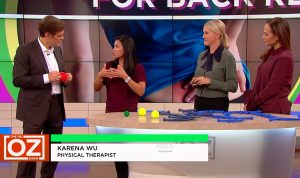 ActiveCare Physical Therapy, PC
ActiveCare Physical Therapy, PC
29 West 38th Street
Suite 601
New York, NY 10018

